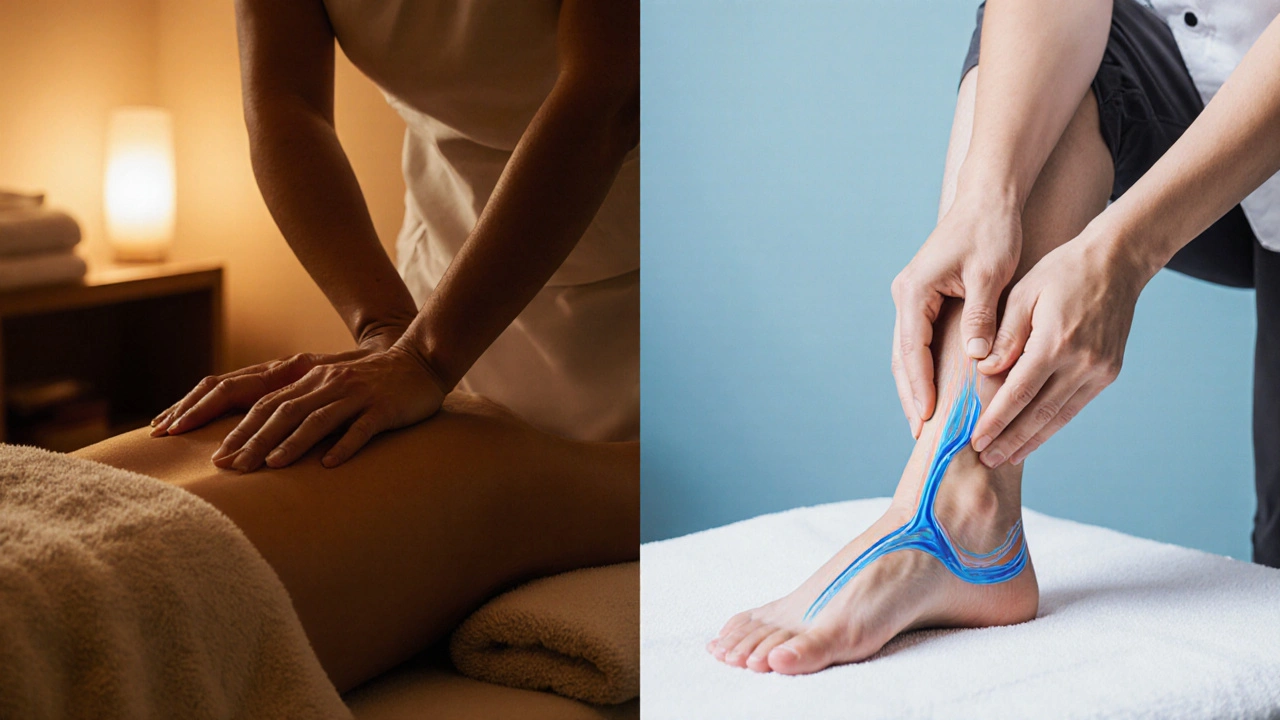Soft Tissue Therapy: Techniques, Benefits, and What to Expect
When working with Soft Tissue Therapy, a hands‑on approach that targets muscles, fascia, and connective tissue to improve mobility and reduce pain. Also known as soft tissue treatment, it blends pressure, stretch, and movement to unlock tension. Popular branches include Myofascial Release, a slow, sustained pressure technique that lengthens the fascia surrounding muscles, Trigger Point Therapy, focused pressure on painful knots to restore normal blood flow, Sports Massage, a dynamic, performance‑oriented massage used before or after athletic activity, and Swedish Massage, the classic long‑stroke method that promotes relaxation and circulation. Together these methods create a toolbox for anyone looking to move better, feel less sore, and recover faster.soft tissue therapy works because it addresses both the muscular and fascial layers, which are tightly linked in the body’s kinetic chain.
Core Techniques in Soft Tissue Therapy
Myofascial release is often the first step for chronic tightness. Practitioners apply gentle pressure across the fascia, hold for 90‑120 seconds, then release. This pause lets the tissue reorganize, improving elasticity and range of motion. Trigger point therapy follows up by zeroing in on palpable nodules; a therapist may use a small amount of pain to break the cycle of restricted blood flow, then apply a soothing stretch. Sports massage differs by using faster, rhythmic strokes—like effleurage and petrissage—to warm up muscles before activity or flush metabolites after a workout. Swedish massage, while more generalized, still contributes by increasing lymphatic drainage and calming the nervous system, which indirectly supports deeper work.
Choosing the right approach depends on your goals. If you’re an athlete aiming for peak performance, sports massage and targeted trigger point work can shave minutes off recovery time. For desk‑bound professionals with postural strain, myofascial release combined with Swedish techniques often yields the biggest relief. Safety matters, too: therapists should assess skin integrity, medical history, and any contraindications such as acute inflammation or deep vein thrombosis before applying pressure. A good practitioner will explain the session plan, adjust intensity based on feedback, and give you simple self‑care moves—like foam rolling or gentle stretching—to maintain the benefits between visits.
With this overview, you’ll recognize how each modality fits into the broader picture of soft tissue health. Below you’ll find a curated collection of articles that dive deeper into specific techniques, debunk common myths, and share practical tips you can try right away. Whether you’re new to bodywork or looking to fine‑tune an existing routine, the posts that follow will give you the insight you need to make informed choices and get the most out of every session.
Contractual Tendon Release Myths Debunked: Facts You Need
Discover the truth behind Contractual Tendon Release. This guide debunks five common myths, explains the science, safety, and how to choose a qualified therapist.

